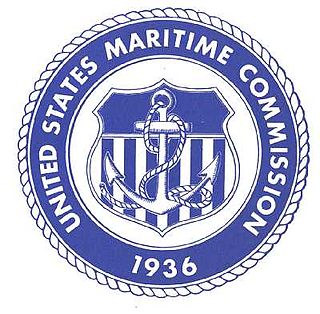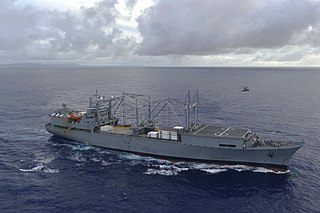SS Sachem may refer to one of two Type T3-S-A1 tankers built for the United States Maritime Commission by Bethlehem Sparrows Point Shipyard:

The United States Maritime Commission (MARCOM) was an independent executive agency of the U.S. federal government that was created by the Merchant Marine Act of 1936, passed by Congress on June 29, 1936, and replaced the United States Shipping Board which had existed since World War I. It was intended to formulate a merchant shipbuilding program to design and build five hundred modern merchant cargo ships to replace the World War I vintage vessels that comprised the bulk of the United States Merchant Marine, and to administer a subsidy system authorized by the Act to offset the cost differential between building in the U.S. and operating ships under the American flag. It also formed the United States Maritime Service for the training of seagoing ship's officers to man the new fleet.
Bethlehem Sparrows Point Shipyard in Sparrows Point, Maryland, USA, was founded in 1887 as Maryland Steel. It was acquired by Bethlehem Shipbuilding Corporation in 1916 and renamed. The shipyard was sold in 1997 to Baltimore Marine Industries Inc.. As of 2012, it is owned by Barletta Industries, which has converted it to the Sparrows Point Shipyard and Industrial Complex.
- SS Sachem (1942) (MC hull number 517), became USS Enoree (AO-69); placed in National Defense Reserve Fleet in 1958; scrapped in 1976
- SS Sachem (1943) (MC hull number 523), scrapped in 1964

The National Defense Reserve Fleet (NDRF) consists of "mothballed" ships, mostly merchant vessels, that can be activated within 20 to 120 days to provide shipping for the United States of America during national emergencies, either military or non-military, such as commercial shipping crises.
or to:
- SS Sachem (1893), passenger ship built by Harland and Wolff for Geo Warren & Co and completed on 28 October 1893

Harland & Wolff Heavy Industries is a heavy industrial company, specialising in ship repair, conversion, and offshore construction, located in Belfast, Northern Ireland. Harland & Wolff is famous for having built the majority of the ships intended for the White Star Line. Well known ships built by Harland & Wolff include the Olympic-class trio: RMS Titanic, RMS Olympic and RMS Britannic, the Royal Navy's HMS Belfast, Royal Mail Line's Andes, Shaw Savill's Southern Cross, Union-Castle's RMS Pendennis Castle, and P&O's Canberra. Harland and Wolff's official history, Shipbuilders to the World, was published in 1986.
| This article includes a list of ships with the same or similar names. If an internal link for a specific ship led you here, you may wish to change the link to point directly to the intended ship article, if one exists. |
